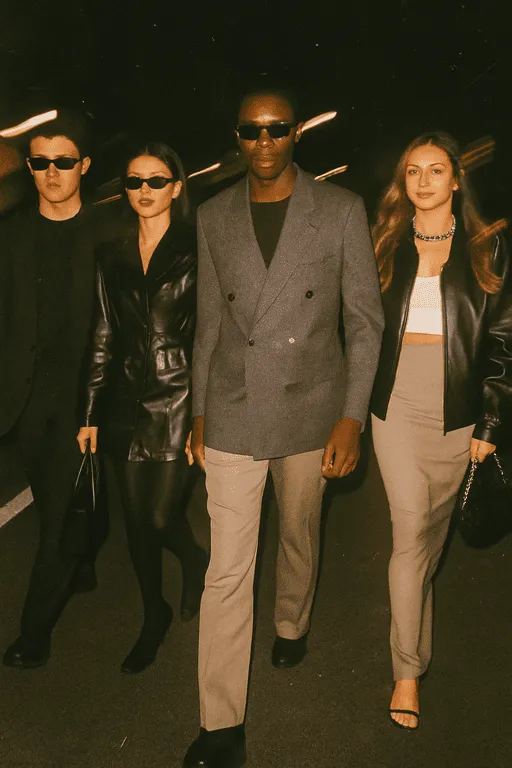So, you’re either building an e-commerce website or thinking about improving the one you’ve got. And let’s face it—no one wants a good-looking site that doesn’t convert. In the world of e-commerce web design, it’s not just about making things pretty. It’s about creating experiences that move people—from browsing to buying. Whether you’re running a Shopify store or custom-developing your own platform, there’s one universal truth: your design is either working for you or against you.
As one of the top concerns in web design Dubai, especially in such a competitive and high-expectation market, conversion-focused design isn’t optional. It’s your edge.
Let’s dig into what separates a stunning site that doesn’t sell… from a streamlined, conversion-focused powerhouse that turns clicks into loyal customers.
1. Why E-commerce Web Design Isn’t Like Other Web Design
Here’s the deal: e-commerce websites are not like your standard brochure-style business websites. They have one job—sell. Sure, branding matters, tone matters, but none of it matters more than the almighty conversion.
When you land on a product page, you’re either going to click “Add to Cart” or you’re bouncing in 10 seconds flat.
That means every element of your e-commerce web design—from the headline to the product image to the placement of the CTA—needs to be crafted with one goal in mind: converting visitors into buyers.
Especially here in Dubai, where competition is fierce and expectations are high, the margin for error is razor thin. Shoppers here are used to excellence. If your e-commerce site isn’t intuitive, fast, and persuasive? Someone else’s is.
2. The Most Valuable Real Estate: Above the Fold
Let’s talk about the fold. This is everything your visitors see the moment the page loads, without scrolling.
If you take away just one thing from this article, let it be this:
“Above the fold” is the most valuable piece of property on your e-commerce site.
Why? Because most users won’t scroll unless you give them a reason to. And on mobile? That screen space is even more limited.
So what absolutely needs to appear above the fold?
- Clear navigation (including return policies or shipping info)
- Breadcrumbs to help users know where they are
- High-quality product image or gallery
- Product title and short, sharp description
- Social proof: reviews, ratings, trust badges
- Price and discounts
- CTA button: Add to cart, Buy now, etc.
- Product variations (if available): size, color, etc.
If you’re missing any of these elements, you’re leaving money on the table. It’s not enough to just look good—you have to be functional in your design, especially above the fold.
3. Stop Reinventing the Wheel—Just Look at Amazon
You want to see the most tested and optimized product pages on the planet?
Look at Amazon.
Amazon isn’t winning because it’s the sexiest site on Earth. It’s winning because it’s clear, consistent, and conversion-focused.
Let’s break it down. Every product page has:
- Clear product images (with zoom and angle options)
- A bold title and short description
- Star ratings and number of reviews
- Pricing + prime delivery badge
- Quantity selector + variation options
- “Add to Cart” and “Buy Now” CTA buttons
- Urgency indicators (“Only 3 left!”)
Now, am I saying you should clone Amazon? Of course not.
But you’d be crazy not to borrow their structure and psychology. People trust what they know. When your layout feels familiar, users feel safe and in control—and that leads to sales.
4. What Happens When You Don’t Prioritize Conversion?
Let me show you a mistake I see all the time in web design Dubai projects.
A client buys a beautiful-looking theme from Themeforest. It’s sleek. It’s modern. It’s full-width. But the CTA button is three scrolls down. The product image is tiny. There are no reviews visible. And worse? On mobile, the first thing users see is a giant hero banner with no real info.
Design like that doesn’t just fail—it actively hurts your business.
Design without strategy is decoration.
E-commerce design without conversion thinking is the digital version of opening a store and not showing the product in the window.
That’s why every choice—from spacing to typography to image size—needs to be tied to a purpose: helping the visitor buy faster, with less friction and more trust.
5. The Mobile Experience Is Everything
Let’s get this straight: most e-commerce traffic is mobile. In Dubai, mobile penetration is incredibly high, and users are shopping from their phones at record rates.
But here’s the kicker—most e-commerce sites still design for desktop first.
That has to change.
If your product pages look great on desktop but are clunky, confusing, or incomplete on mobile, your bounce rates are going to skyrocket.
What matters most on mobile?
- A sticky CTA button that follows as users scroll
- Tap-to-zoom image galleries
- Accordion-style product info (to save space)
- Fast loading times (because mobile patience = 3 seconds max)
- Mobile-friendly review sections
- One-hand-friendly layout
In web design Dubai projects, where mobile-first design is non-negotiable, we make it a priority to test every layout on real devices—not just emulators.
Remember: If you don’t convert on mobile, you don’t convert.
6. The Psychology Behind a Great Product Page
Here’s where things get a little deeper.
A high-converting product page doesn’t just show a product. It answers questions. It builds trust. It removes doubt.
Let’s walk through what users are thinking:
- Is this the right product for me?
- Will this work as described?
- Is the price fair?
- Can I trust this store?
- What if I want to return it?
- Will it arrive on time?
A good e-commerce web design anticipates and answers these questions before they’re asked.
How?
- Detailed product descriptions that focus on benefits
- Clear return and shipping policies (preferably above the fold)
- Trust badges (SSL secure, verified reviews, payment logos)
- Social proof like reviews and user-generated content
- Urgency and scarcity cues (“Sale ends today”, “Only 2 left”)
This isn’t fluff. This is strategy. And it’s what separates average product pages from high-performing ones.
7. Your CTA Button Is Your Best Salesperson
Let me say this loud for the people in the back:
The “Add to Cart” button is the most important button on your site.
It should be:
- Big
- High contrast
- Visible without scrolling
- Repeated on long pages
- Sticky on mobile
Label it clearly. No “Learn More” or “Explore Options” nonsense. Be direct: Buy Now. Add to Cart. Get Yours.
We’re not writing poetry. We’re closing sales.
8. Web Design Dubai: Why Local Matters in E-Commerce
Let’s zero in on web design Dubai for a moment. Dubai’s market is unique. You’re not just competing with local brands—you’re competing globally.
Consumers in the UAE are tech-savvy, brand-aware, and fast-moving. They expect top-tier design, lightning-fast performance, and personalized experiences.
Some Dubai-specific considerations for e-commerce design:
- Arabic + English bilingual support
- Integration with local payment gateways (like Tabby, Tamara, or local banks)
- Shipping options tailored to the GCC
- Local reviews and influencers (builds regional trust)
- Culturally sensitive design choices
Partnering with a web design agency in Dubai that understands these nuances is critical if you want to play (and win) in this market.
9. Templates Are a Starting Point, Not a Strategy
Let’s be real—everyone loves a good template.
But the truth is, most templates are designed to look good in a preview—not to convert.
If you’re going to use a template, you need to:
- Customize it with real strategy
- Reorganize the layout to put key info above the fold
- Adjust for mobile usability
- Test every page against real user behavior
In other words, don’t trust a theme to do the job of a strategist.
10. Treat Your E-Commerce Web Designer Like a Conversion Partner
Here’s the mic drop moment:
A great e-commerce web designer isn’t just a designer—they’re a conversion expert.
They understand psychology. They know layout strategy. They’re obsessed with reducing friction.
So if you’re hiring for web design Dubai or anywhere else, don’t just look at aesthetics. Ask:
- How do you design for conversions?
- What’s your approach to mobile-first UX?
- Do you use heatmaps or A/B testing post-launch?
- Can you support CRO and analytics ongoing?
If your designer can’t answer those questions, you’re not hiring a partner. You’re hiring a decorator.
Final Thoughts: Good Design Pays for Itself
Let’s wrap this up.
Your e-commerce web design can make or break your business. Not because of how beautiful it is—but because of how effective it is.
When you get the design right:
- Your bounce rates drop.
- Your conversions rise.
- Your customers trust you more.
- Your brand grows.
- Your revenue increases.
In the competitive landscape of web design Dubai, where customers expect excellence and speed, you can’t afford to treat design as an afterthought.
Invest in conversion. Design for action. Make every pixel count.
Because at the end of the day? Pretty doesn’t pay. Performance does.



